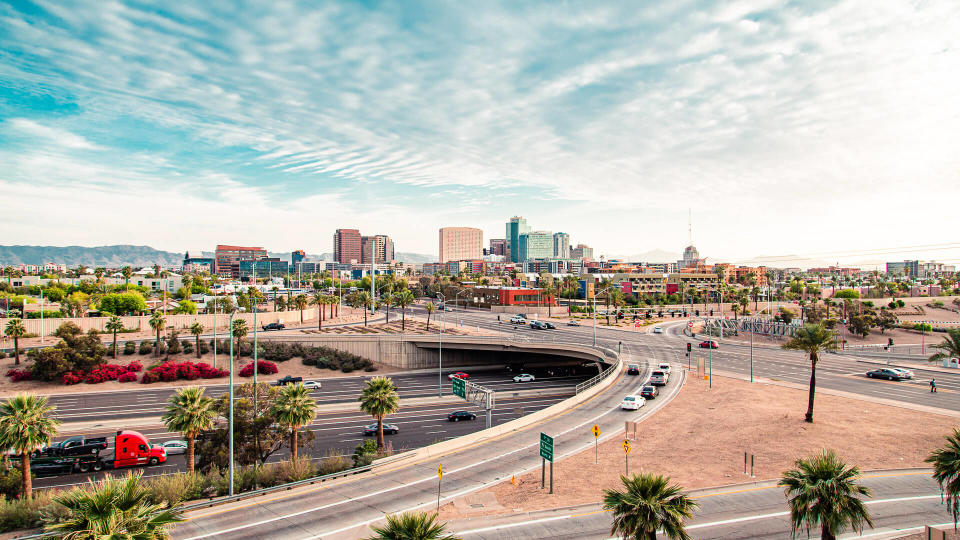5 Biggest Money Mistakes When Retiring in Arizona

The Valley of the Sun is a big draw for retirees, as it offers almost anything that a senior could want. In addition to its namesake warm weather, Arizona sports a bewildering variety of recreational activities, from world-class golf courses to surprisingly ample fishing spots to the majestic natural wonder of the Grand Canyon.
Watch Out: 4 Things Boomers Should Never Sell in Retirement
Up Next: 7 Common Debt Scenarios That Could Impact Your Retirement — and How To Handle Them
Yet, it’s easy for those planning on retiring in Arizona to overlook how expensive it can be. While a land that boasts wide-open spaces and is essentially a desert might not seem like it would be that expensive, you might be surprised at how much you may have to pay for some of your basic necessities. Here’s a look at common money mistakes that are all too easy to make when retiring in Arizona.
Wealthy people know the best money secrets. Learn how to copy them.
Underestimating Overall Expenses
According to U.S. News & World Report, Arizona only ranks No. 36 in the country terms of overall affordability. The last of the 48 contiguous states to join the Union, this places Arizona in the position of being more expensive than roughly two-thirds of the United States.
These higher expenses are spread across a variety of categories, from utilities and healthcare to housing and transportation. While all costs are regional, and there are certainly affordable pockets of Arizona, if you plan to live the ideal retiree lifestyle close to amenities and recreational opportunities, you should plan on your budget being closer to the high end of the range rather than the overall average.
Forgetting About Summertime
In 2023, Phoenix, the capital of Arizona, had a whopping 133 days of temperatures in the triple digits. That means that essentially from mid-May to mid-October, you should expect cities across Arizona to suffer from 100-plus temperatures on a daily basis. This can raise your costs on a number of levels.
First, your cooling bills will not only soar in the summertime, but they will remain elevated for nearly five months straight. Next, with such intense heat, you may end up spending more time indoors or in your car, boosting your transportation and electric bills as well. On an annual basis, including the cooler winter months, only seven states have higher monthly average utility bills than Arizona.
Check Out: 3 Cities To Retire In That Are as Awesome as Honolulu and San Francisco but Way Cheaper
Assuming Healthcare Is Affordable
Arizona is known for having a wide healthcare network, ranking No. 4 in the nation according to Goodnow McKay. Hosting prestigious hospitals such as the Mayo Clinic (Phoenix) helps the state’s reputation. But data from the CDC shows that Arizona ranks as the seventh-most expensive state when it comes to healthcare costs.
Adding to this cost may be the far distances many state residents have to travel to receive treatment. According to U.S. News & World Report, Arizona ranks No. 43 in terms of healthcare access. So if you don’t live near Phoenix, you may have to plan to travel there to receive anything more than basic healthcare.
Not Realizing How Vast the State Is
If you’ve ever been in the greater Phoenix area and a friend asked you to drive to the other side of the metro area for a visit, you have firsthand knowledge of just how vast distances in this desert state can be. This is a drive that can take 45 minutes even with minimal traffic, and perhaps double that during rush hour. This can add to your transportation costs, both in terms of gasoline (or EV charging) and maintenance, as the harsh summer sun beats down upon your vehicle. Public transportation in Arizona is struggling to keep up with its exploding population, so when combined with the vast distances in the state, you’re likely to need a car.
Thinking You Can Score a Cheap Home
A desert environment with scorching temperatures and vast distances to cover might seem like the perfect recipe for low housing costs, but that’s not the case in Arizona. According to RentCafe, housing prices in Arizona are 18% higher than the national average. In pricey and popular communities like Scottsdale, where the median price of a home is $821,372, according to Zillow, that margin soars to 42%.
This trend may continue, as both Phoenix and Scottsdale rank in the top 10 nationally in terms of U.S. cities where home prices have doubled the fastest in the past seven years. Even lesser-known Arizona cities like Chandler, Gilbert and Mesa have seen prices double in that same time period.
The Bottom Line
Arizona certainly has plenty to offer retirees, particularly those looking to live in a recreation-filled area with a warm climate. But you may have to budget a bit more than you expect if your goal is to retire in the Grand Canyon State. Being armed with this knowledge ahead of time may help you plan a savings and investment strategy that can get you to where you need to be.
More From GOBankingRates
This article originally appeared on GOBankingRates.com: 5 Biggest Money Mistakes When Retiring in Arizona

 Yahoo Finance
Yahoo Finance 